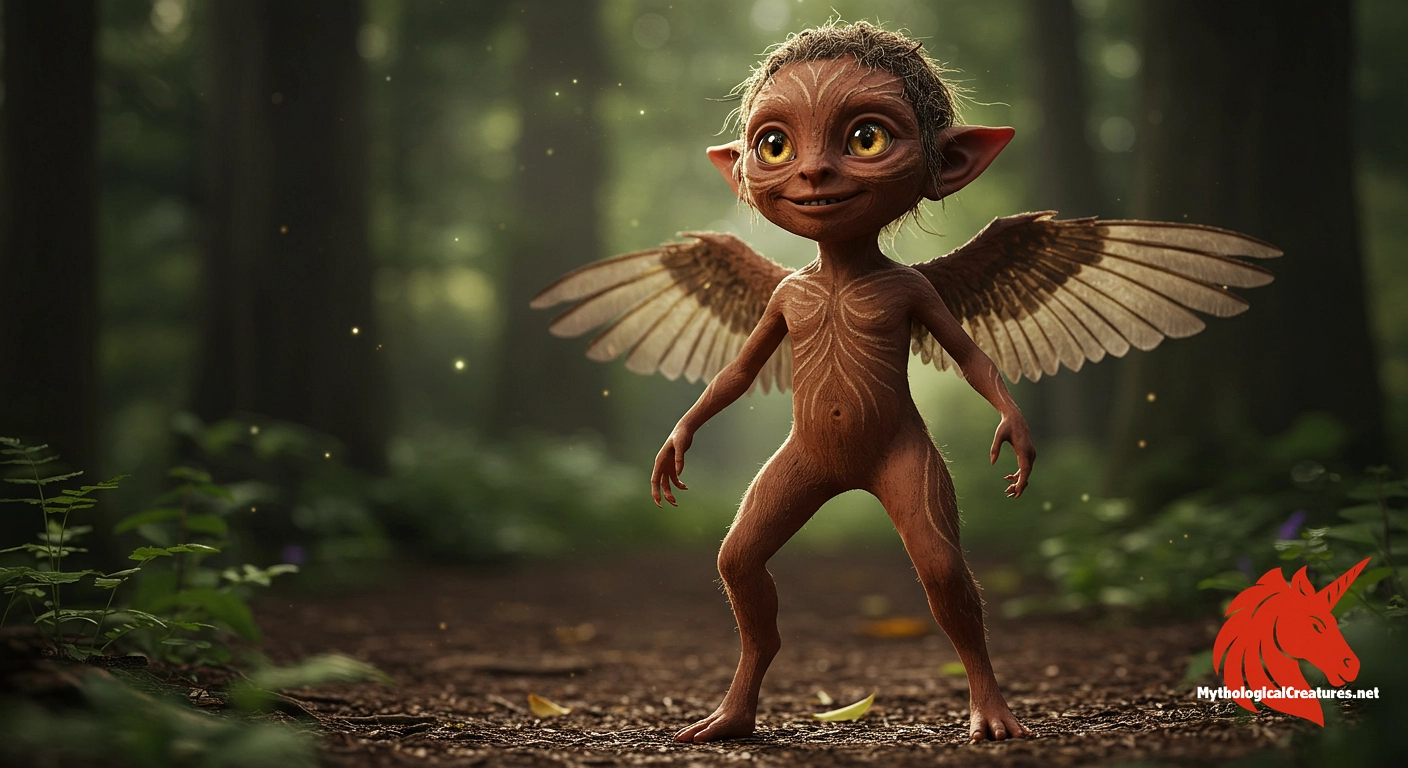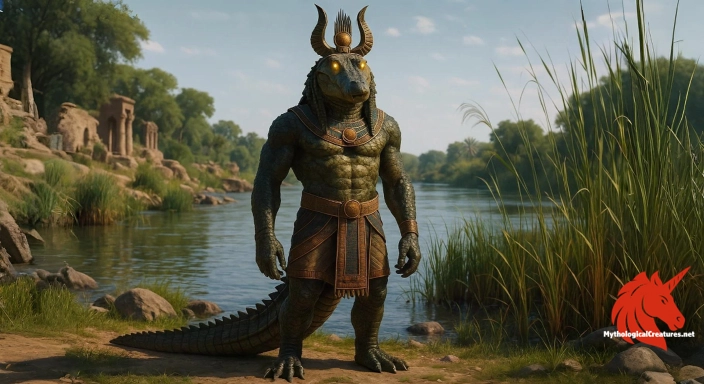Jogah: The Jogah are mythical little people from Iroquois lore, renowned as invisible drum dancers who leave mysterious signs of their presence.

Jogah
Jogah - The Jogah encapsulate the interplay between the visible and invisible realms, serving as both playful pranksters and protective guardians in Iroquois spiritual tradition.
Origins & First Encounters
The legend of the Jogah emerges from the vibrant oral traditions of the Iroquois, where these mysterious little people have long been woven into the fabric of indigenous storytelling.
They are known as the Drum Dancers, a title that hints at their unique connection to sound and movement despite their largely invisible forms.
These entities are deeply rooted in the spiritual and cultural practices of the Iroquois, serving as both playful tricksters and vigilant guardians of natural spaces.
Many accounts detail their presence by the perplexing phenomenon of drumming without any visible drummers, as well as the appearance of bare-earth rings and natural stone bowls.
Their origins are shrouded in a blend of myth and ancestral memory, making them appear as timeless spirits that have always existed alongside the people.
Within Iroquois tradition, they are often encountered by those who are particularly sensitive to the spirit world, such as children, elders, or spiritual healers.
Historically, their presence is thought to explain various natural and supernatural occurrences, from disembodied lights to episodes of unexplained misfortune.
This intricate interplay between the seen and unseen realms highlights their role as mediators between nature and human society, imbuing them with a unique cultural significance.
Source Texts & Tale Variants
The Jogah have been passed down through generations primarily via oral tradition, ensuring that each retelling enriches the myth with regional nuances and personal experiences.
Early accounts of these little people are found in the descriptive narratives of Iroquois elders, whose stories capture the mysterious sounds and visual hints of their existence.
Anthropological studies conducted during the 19th and early 20th centuries helped document these elusive beings, albeit through varied interpretations by different authors.
Some documented versions focus on the playful, mischievous aspects of the Jogah, while others emphasise their role as custodians of the natural order and protectors against unseen malevolent forces.
Diverse narratives have evolved over time, with certain texts referring to the ritual use of tobacco and fingernail offerings at natural bowls left by the Jogah.
In some cultural retellings, their appearance is linked with the phases of the moon or other celestial events, reinforcing their association with natural cycles.
These sources reveal a complex web of lore that spans both spiritual and environmental spheres, where the visible signs of their presence prompt deeper reflections about the unseen.
Every story variant contributes to a richer understanding of their role in balancing human, natural, and spiritual realms.
Form & Powers
Descriptions of the Jogah consistently highlight their diminutive stature, with sightings noting figures ranging from knee-high proportions to a modest 4 feet in height.
Their elusive nature often renders them partially invisible or shadow-like, as if they blend seamlessly with the ambient natural environment.
When they do manifest, there is a tangible quality to their presence, often accompanied by ethereal sounds reminiscent of drumming that seems to emanate from nowhere.
Observers have remarked on features that seem both human and otherworldly, with delicate facial expressions that can quickly shift from benevolence to mischief.
Many depictions suggest that their skin may carry elements of the earth’s texture, mimicking the colour and subtle patterns of stone, mud, or foliage.
Some versions of the lore describe them adorned with natural accoutrements—like leaves, small stones, or even hints of feather-like embellishments—that further link them to the wilderness.
The subgroups within the Jogah myth, such as the Gahongas, sometimes display more rugged, almost elemental features that reflect their rocky habitats.
In contrast, those associated with the Gandayah occasionally shift shapes, taking on the forms of American robins or owls, hinting at an adaptive, chimeric quality in their physical makeup.
This blend of human-like form with the raw beauty of nature lends them an enigmatic presence that is both alluring and cautionary.
Regional Faces
The interpretation of the Jogah varies significantly across different Iroquois communities, reflecting the diverse landscapes and cultural practices of the region.
In some areas, the emphasis is placed on the Jogah’s ability to interact with natural features, where they are believed to leave physical traces such as bare-earth rings and natural bowls.
Those living near rocky streams often recount the peculiar behaviour of the Gahongas, whose stone-tossing antics enliven local folklore with exhilarating yet perilous games.
In the more agriculturally inclined regions, the Gandayah are particularly revered for their influence over plant life, symbolising the nurturing and cyclical nature of growth.
Local variations also highlight different interpretations of their moral character: while they can be mischievous playmates, there is always an underlying tone of respect required to avoid their wrath.
Variations in descriptions often mirror the unique environmental conditions in which they are believed to exist, whether thriving in rocky outcrops or hidden in the secrecy of underground burrows.
Some communities have developed elaborate rituals and gestures for appeasing these spirits, illustrating the deep-seated cultural importance of living in harmony with them.
This diversity in regional narratives underscores the adaptive nature of the Jogah myth, where every community finds its own way to relate to these enigmatic beings.
Cultural Parallels
When comparing the Jogah to similar entities in global mythology, striking parallels emerge with European fairies and Celtic leprechauns, all of whom possess a blend of playful mischief and a protective connection to natural realms.
The Jogah share with these Western counterparts a common role as custodians of nature whose favour must be earned through respectful interaction and ritual offerings.
In indigenous North American lore, elements of the Jogah myth can also be found among other native groups, albeit with regional adaptations that stress either benevolent guardianship or dangerous trickery.
The subtle interplay between light and shadow in their depictions mirrors the duality seen in many mythological beings who embody both creation and chaos.
Interestingly, their method of communicating through unseen drumming finds a counterpart in other traditions where music or sound is believed to be a medium bridging the material and spiritual worlds.
The practice of leaving offerings, such as tobacco or even fingernails, resonates with wider indigenous spiritual practices, linking the physical act of giving with metaphysical reciprocity.
This comparative exploration reveals that while the Jogah are uniquely situated within Iroquois culture, their core attributes echo a universal human fascination with the hidden and the ineffable.
Such parallels enrich the myth by placing the Jogah within a broader context of global folklore, highlighting common themes of respect, reciprocity, and the mysterious forces governing nature.
Legacy & Modern Evolution
The enduring legacy of the Jogah in modern culture is a testament to their dynamic role as both whimsical tricksters and steadfast guardians of the natural world.
Over the centuries, their depiction has evolved from purely oral recounting to featuring prominently in contemporary art, literature, and indigenous cultural celebrations.
Modern reinterpretations often fuse traditional imagery with current environmental themes, casting the Jogah as symbols of ecological balance and the need to protect natural habitats.
They appear in various forms, from detailed illustrations in children’s books to robust symbolic representations in community festivals that celebrate indigenous heritage.
This transformation reflects a broader trend of re-valuing ancient mythologies as important sources of cultural identity and environmental wisdom.
Many contemporary thinkers and artists highlight their dual nature—a playful yet cautionary presence that reminds us of the fine line between respect and exploitation in our interaction with nature.
Technological and artistic advancements have allowed new generations to reimagine the Jogah, often portraying them as both guardians of ancient wisdom and as harbingers of a renewed ecological consciousness.
Thus, while the Jogah remain deeply rooted in the historical narratives of the Iroquois, their modern legacy continues to inspire discussions on cultural preservation, environmental stewardship, and the timeless allure of the unseen world.
Interesting Fact
An intriguing aspect of Jogah lore is their subdivision into distinct groups—each with its own role, from playful stone-throwers to nature-guiding shape-shifters and underground guardians—illustrating the rich complexity of Iroquois spiritual beliefs.
Quick Creature Info
Origin:
Associations:
Our Mythic Legendary Rating:

Habitat:
Supernatural Powers:
Physical Attributes:
Abilities:
Behavior:
Weaknesses:
Lore:
References
Discover Another Mythical Legend You May Not Have Heard Of?
Uncover the mysteries of ancient folklore and expand your knowledge of legendary beings from cultures around the world.
Dare to Meet the Sobek....
Curated by the Mythological Creatures Team (rev. May 2025)
